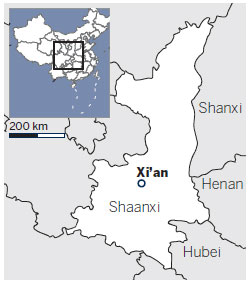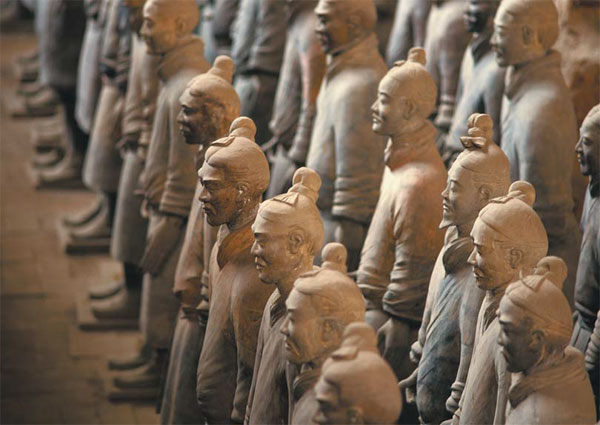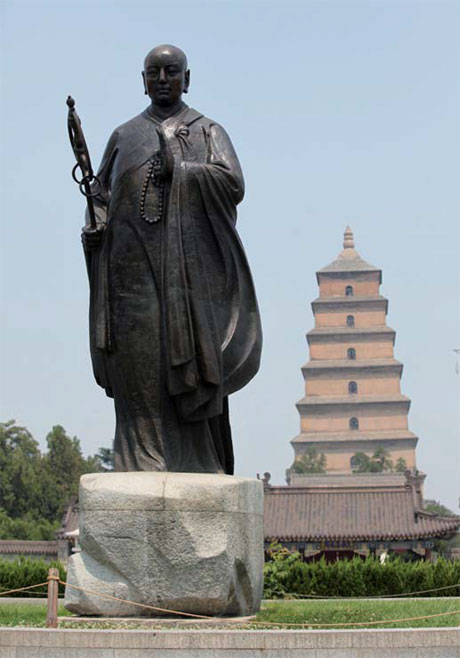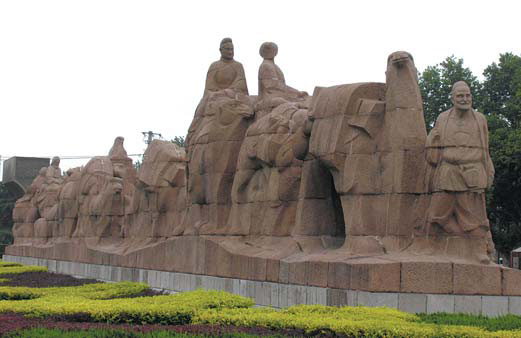Tour Xi'an in 3 days, visa free
|
The Terracotta Warriors is a must-see in Xi'an. Photos provided to China Daily |
City hopes to lure more foreign tourists to historic location on 72-hour transit visits
Xi'an plans to more actively publicize its 72-hour visa-free policy for visitors from 51 countries, aiming to attract more of them to the historic city.
Xin Jianwei, spokesman for the Xi'an Tourism Administration Bureau, said that as an inland city with fewer international air routes than coastal cities, the visa-free policy had not attracted as many transit visitors as the tourism authority had expected since it was implemented last year. "But we believe the policy will further promote our tourism with the effort we will make to publicize the policy to foreign tourists," Xin said.
Xi'an, capital of Shaanxi province and well known as the home of the Qin Dynasty (221-206 BC) Terracotta Warriors, enacted a 72-hour visa-free policy from June 1, 2014. It is the first city in Northwest China, and the eighth in the country, to implement such a policy.
Transit passengers holding valid visas and a flight ticket to a third country can stay visa-free in the administrative areas of Xi'an and Xianyang, a city neighboring Xi'an and the location of Xi'an Xianyang International Airport, for three days, said Cui Guozheng, deputy director of the exit and entry administration bureau under the provincial public security department.
The 51 countries include most of Europe, six countries in the Americas, two from Oceania and six Asian countries.
Cui said the landing day is not included in the 72 hours of the visa-free time but that the clock starts at midnight at the end of the day travelers arrive at the airport.

Xi'an Xianyang International Airport has 12 international or regional air routes connecting it to Helsinki (Finland); Seoul, Busan and Jeju (South Korea); Bangkok and Phuket (Thailand), Nagoya and Tokyo (Japan); Danang (Vietnam); and Siem Reap (Cambodia), as well as Hong Kong and Taipei.
Xi'an, known in China as "the eternal city", reflects the changes of the nation as if it is a living history book. Called Chang'an in ancient times, the city is one of the birthplaces of the ancient civilization in the Yellow River basin. During its 3,100-year development, 13 dynasties including the Western Zhou (11th century-771 BC), Qin (221-206 BC), Western Han (206 BC-AD 24) and Tang (AD 618-907) located their capitals in the city.
Three days in Xi'an:
Day 1: Terracotta Warriors
Many consider the Terracotta Warriors and Horses to be the most significant archaeological excavations of the 20th century. Discovered in 1974, work is ongoing at the site near Emperor Qin Shihuang's Mausoleum in Lintong district. It is a must-see for any visitor to China.
Since the Terracotta Warriors and Horses Museum opened to the public in October 1979, it has attracted more than 200 global dignitaries from abroad.
The museum covers an area of 16,300 square meters, divided into three excavation pits. More than 7,000 pottery soldiers, horses, chariots and weapons have been unearthed from the pits.
The archaeological marvels put Xi'an on the map for tourists from around the world, and UNESCO listed it in 1987 as a World Cultural Heritage site.
After seeing the ancient ceramic army, tourists can visit Mount Lishan, a scenic spot nearby. After wandering in the scenic royal garden at the foot of the mountain, travelers can wash away their travel fatigue in the Huaqing Hot Springs, a royal bathhouse built 3,000 years ago.
Day 2: High and low views
Make your first stop the Big Wild Goose Pagoda (Dayan Ta), which is located in the south of the city, about 4 kilometers from downtown. A symbol of old Xi'an, the pagoda is a well-preserved ancient building and a holy place for Buddhists.
After getting a bird's-eye view of the city from the top of the 64-meter-high structure, tourists can visit Shaanxi History Museum, about 1 km northwest of the pagoda. The museum is a grand complex of buildings imitating the architectural style of the Tang Dynasty and showcasing thousands of ancient exhibits.
Day 3: City wall, local delicacies
Xi'an boasts the most complete city wall in China - it's also one of the largest ancient military defense systems in the world.
First built in the early Ming Dynasty (1368-1644) and renovated in recent years, the wall now stands 12 meters high, is 12-14 meters wide at the top and 15-18 meters thick at the bottom. It stretches 13.7 km in length and is surrounded by a deep moat and a circular park.
Bicycles can be rented for a two-hour self-propelled tour of the wall.
The Forest of Stone Steles Museum, inside the wall near the south gate, was the site of the Temple of Confucius during the Northern Song Dynasty (960-1127). It was established in 1087 when some precious stone steles were moved there for safekeeping.
With an area of 31,000 sq m and 900 years of history, this treasure house holds some 3,000 stone steles of different periods from the Han Dynasty (206 BC-AD 220) to the Qing Dynasty.
Also inside the wall, there are a number of traditional Shaanxi restaurants that offer distinctive delicacies, such as Xi'an dumplings, yangrou paomo (crumbled unleavened bread simmered in mutton stew), hulu tou (broth with intestines and tripe), buckwheat and Qishan noodles.
Contact the writers through malie@chinadaily.com.cn
|
A statue of Tang Dynasty monk Xuan Zang stands in front of the Big Wild Goose Pagoda. |
|
A landmark statue in Xi'an shows travelers on the ancient Silk Road. |
|
A night view of Tang Dynasty Lotus Garden, a rebuilt imperial garden in Xi'an. |
(China Daily 09/22/2015 page12)


















